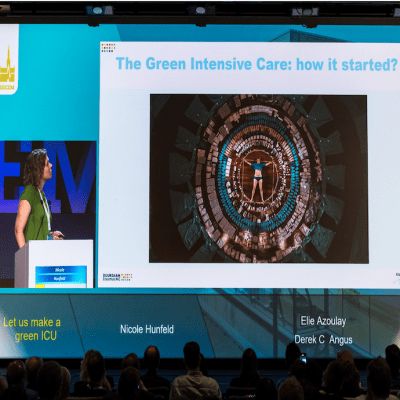Lung-protective ventilation (LPV) limits lung injury (VILI). However, deep sedation is required to tolerate LPV, and patient self-induced lung injury (P-SILI) can occur during spontaneous breathing along with high respiratory efforts, lung stress and strain. Prevention of P-SILI may require further sedation. In addition, patient-ventilator dyssynchrony can worsen outcomes, resulting in increased sedation.
Ventilation targets may be achieved with deep sedation. At the same time, escalated sedation can result in significant adverse effects, including hypotension, delirium, delayed wake-up, drug-specific toxicities, impeded early mobility, and diaphragm disuse atrophy. All these factors further contribute to prolonging mechanical ventilation and increased mortality.
Current clinical practices treat sedation independently from ventilation. However, this should not be the case. Sedation and mechanical ventilation should be managed together. A new paradigm of personalised sedation should be explored - "lung protective sedation". This approach uses sedatives to target synchrony, facilitate safe levels of dyssynchrony and patient effort and balance the risk/benefit of sedation while avoiding treatment of the lungs. However, effective implementation of lung-protective sedation requires significant improvement in current monitoring techniques for sedation.
The Richmond Assessment Sedation Scale (RASS), Riker Sedation–Agitation Scale (SAS), and Ramsay Scale are the most commonly used scales to assess the level of arousal. However, these tools do not assess patient-ventilator interaction or respiratory drive.
Deeper sedation is often not lung-protective. Direct measures of synchrony and effort could facilitate titration of sedation. These can include occlusion pressure, expiratory occlusion pressure, oesophageal pressure, and respiratory muscle pressure are good markers of inspiratory effort and drive. These measures can be targets for monitoring and titration of lung-protective sedation so that harm from insufficient and excessive efforts could be reduced. They can also help determine what thresholds correspond to clinically important safety/injury signals. Identifying different phenotypes of dyssynchrony, frequency of events and the amplitude of efforts should be part of a lung-protective sedation strategy.
Certain drugs such as opioids, benzodiazepines, dexmedetomidine, and propofol commonly used during mechanical ventilation can lead to suppression of respiratory drive; however, each agent has a variable impact on effort and dyssynchrony. The mechanism of lung protection for sedatives is by reducing VILI and P-SILI through synchrony and limiting injurious efforts. But inhaled sedation may provide bronchodilation as it is rapidly titratable and may attenuate lung parenchymal inflammation.
Lung-protective sedation should not be a prescriptive approach for every patient. It should be personalised and adjusted according to the characteristics of the patient. Lung-protective sedation is an important paradigm shift because it recognises the link between mechanical ventilation, sedation and lung injury. However, to use this approach effectively, it is important to assess arousal and comfort, consider the role of sedatives and regulate safe levels of effort by choosing the right sedative depending on the clinical scenario and unique patient characteristics.
Source: Intensive Care Medicine
Image Credit: iStock
References:
Kassis EB, Beitler JR, Talmor D (2022) Lung-protective sedation: moving toward a new paradigm of precision sedation. Intensive Care Med. doi.org/10.1007/s00134-022-06901-z
Latest Articles
sedation, personalised sedation, lung-protective sedation
New Paradigm of Personalised Sedation
























